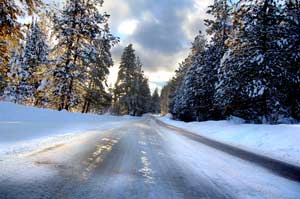Six local authorities including North Tipperary and South Tipperary, have been testing drinking water after 210 tonnes of urea were spread on national roads in order to melt snow and ice during the recent cold spell.
 This followed advice from the National Emergency Response Co-Ordination Committee (NERCC) who advised the National Roads Authority (NRA) to source 600 tonnes of Urea for use as a de-icer on an emergency basis.
This followed advice from the National Emergency Response Co-Ordination Committee (NERCC) who advised the National Roads Authority (NRA) to source 600 tonnes of Urea for use as a de-icer on an emergency basis.
Expressed Sequence Tags (EST’s) should reveal shortly if public supplies of drinking water have been contaminated.
Being solid, Urea is colourless, odorless, neither acidic nor alkaline, highly soluble in water and is widely used in fertilizers as a convenient source of nitrogen. Urea can be irritating to skin, eyes, and the respiratory tract. Repeated or prolonged contact with Urea in fertilizer form on the skin may cause dermatitis, however the substance is regarded as relatively non-toxic.
It is now feared that ice and snow, melted by the Urea, may have found its way into natural water sources, some of which may supply drinking water to households.
Alarms were first triggered at the Leixlip, Co Kildare’s water treatment plant last weekend when high levels of nitrates were detected in the water supply.
On Tuesday last, local authorities were contacted and asked to test drinking water in their areas to determine whether their supplies had become contaminated.

Leave a Reply